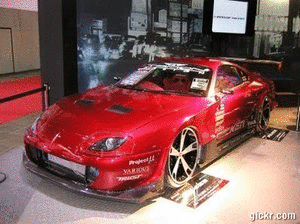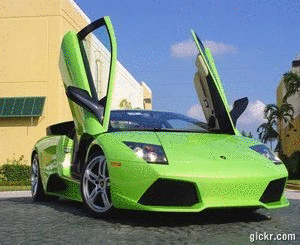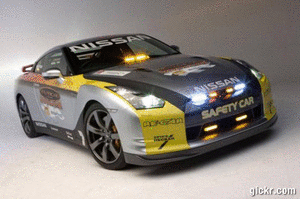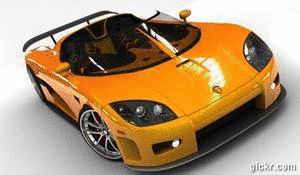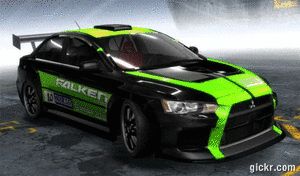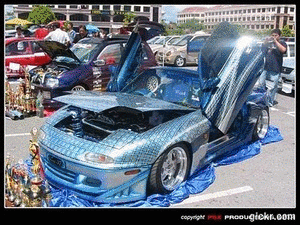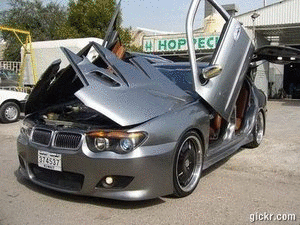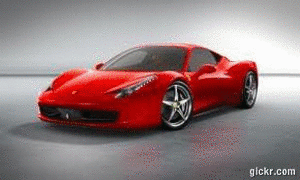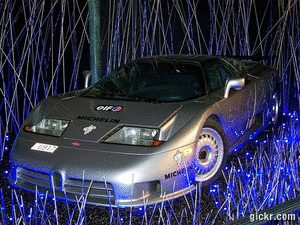|
|
|---|
How an EGR Valve Works
Introduction
An EGR (exhaust gas re-circulation) valve is designed to lower NOX (NO2) gases that occur in the combustion chamber when temperatures reach over 3,500 degrees Fahrenheit. NOX gases have been proven to cause brain damage in humans, therefore EGR valves have been mandatory on most vehicles since 1976. An EGR valve controls exhaust gases and allows them to enter the intake manifold and flow into the combustion chamber at certain times in the operation of the vehicle to reduce combustion chamber temperatures.
Vacuum Operated EGR Valve
To test your vacuum operated EGR valve remove the vacuum line that is connected to the valve, apply vacuum using a vacuum pump to the valve while the engine is running. If the engine stalls the EGR system is working, if not, the EGR valve may have failed or the passages may be plugged with carbon deposits. Testing of a Linear (electric) EGR valve requires a scan tool capable of applying the valve on command.
Source by:
http://www.2carpros.com/how_does_it_work/how_an_egr_valve_works.htm
Audi R8
I really like the preview of it and check out the video below.
Audi R8 LMS
After having a look at the review by Top Gear, it really gain my knowledge about the magnificent Audi R8. This car is build with a combination of carbon fibre, magnesium, and aluminium and has the engine in the middle. Although the car do look small but it is as spacious as you wish for and you would not manage to hear the noisy sound even though you're running on 100mph and it's a V8 engine which eveyone would thought of hearing some screaming sound out of it like what ferrari does.
This car impressed me when it runs a 0-60mph @ a 4.6 seconds.
Audi R8 Review By TopGear
Audi R8 LMS
After having a look at the review by Top Gear, it really gain my knowledge about the magnificent Audi R8. This car is build with a combination of carbon fibre, magnesium, and aluminium and has the engine in the middle. Although the car do look small but it is as spacious as you wish for and you would not manage to hear the noisy sound even though you're running on 100mph and it's a V8 engine which eveyone would thought of hearing some screaming sound out of it like what ferrari does.
This car impressed me when it runs a 0-60mph @ a 4.6 seconds.
Audi R8 Review By TopGear
Air Runner Lexus LS
This is what I called Vip style. This video is specially dedicated to all the Lexus lovers where they can do this to their ride by adding air runner kit to adjust the height whenever you want and check out how low can it gets.
Toyota Passo VIP Style
How Does a Clutch Work?
Introduction
When your car is stopped or coming to a stop the engine needs to be disconnected from the transmission or the engine will stall. With automatic transmission vehicles a torque converter is used to separate the two units, but with manual transmission vehicles a clutch assembly is used to do the job. This clutch kit or unit is composed of a clutch disc, pressure plate, throw out and pilot bearings. (Some front wheel drive vehicles do not use a pilot bearing). Both types of vehicles use a flywheel but are designed a little differently. An automatic transmission has a lighter weight unit that the torque converter bolts directly to and is sometimes referred to as a flex plate. A manual transmission flywheel assembly is made heavier to help engine inertia and to make shifting smoother. The clutch pressure place bolts to the flywheel trapping the clutch disc in-between. The throw out bearing presses against the pressure plate to engage and release the disc. The pilot bearing is mounted in the flywheel and holds the input shaft for the transmission steady.
Clutch and Flywheel Assembly (Cut Away)
Most clutch assemblies operate on the same principle; hold a clutch disc against a flywheel under pressure with the ability to release the pressure to allow the clutch disc to freewheel. The clutch disc is connected to the transmission using an input shaft to the transmission gears and then through to the drive shaft or axles.
Typical Fly Wheel Configuration
When replacing the clutch assembly always resurface the flywheel clutch disc surface. As the clutch wears it can cause the flywheel surface to become un-even, much like a worn brake rotor. If a new clutch disc is installed on and old flywheel it can cause the clutch to not operate properly. If the flywheel is dual stepped (example shown) it must be machined the same way or the clutch clamping pressure will be incorrect causing the clutch to slip or not disengaged.
Typical Clutch Pressure Plate, Disc and Throw-out Bearing
There are two different types of clutch activation methods. Some manufactures use a cable that is fastened to the clutch pedal and then to the clutch fork. While other manufacturers use a hydraulic clutch master cylinder that is connected to a slave cylinder which is positioned at the bell housing, also connecting to the clutch fork. When the clutch pedal is depressed it will force the clutch fork onto the pressure plate causing the pressure plate fingers to release the clutch disc.
Typical Clutch Fork
When installing a new clutch assembly always clean and lube all pivot points including the input shaft splines and throw out slide surface. Do not use grease in excess because it can contaminate the clutch disc causing the clutch to grab and not operate smoothly. Always tighten the clutch pressure plate evenly; never tighten one bolt at a time because it can cause the pressure plate to warp inhibiting clutch disengagement. Use a clutch disc alignment tool to center the clutch disc while the clutch assembly is hand tight. The transmission input shaft will not allow the transmission to be installed completely if the clutch disc is not aligned properly.
Typical Clutch Fork, Throw-out Bearing Installation
To replace a clutch disc the transmission must be removed. To perform this operation a car repair manual is needed because every manufacturer is different.
Basic Step by Step Removal Instruction:
Read Completely Before Beginning
• Raise and support car in a safe and secure manner
• Disconnect the battery (negative side)
• Drain the transmission of fluid
• Remove any obstructions such as exhaust and heat shielding
• Remove driveshaft assembly
• Remove starter assembly (if needed)
• Support the engine as you remove the transmission support member
• Allow the transmission and engine assembly to hang down about 2 to 5 inches. This position allows you to access the upper transmission bell housing bolts easier.
• Remove all but one bell housing bolts
• Support the transmission as you remove the last bolt
• Remove the transmission
• Remove the clutch pressure plate (note: the clutch disc will fall out when the pressure plate is removed)
• Remove flywheel to be re-surfaced
• Clean and lube all pivot points including the input shaft splines and throw out slide surface.
• Re-install flywheel
• Reinstall clutch using a clutch disc alignment tool to center the clutch disc while the clutch assembly is hand tight. (note: the clutch disc can only be installed one way, if the disc is in backwards it will cause the clutch not to disengage) Most clutch disc's have a sticker telling which side is the "flywheel side". If not, most common installation is the raise part of the disc is toward the transmission.
• Tighten the pressure plat evenly to avoid bending
• When re-installing the transmission never allow the transmission to hang without the mounting bolts. If the transmission is allowed to hang it can bend the clutch disc causing the clutch not to disengage.
• Finish reassembly and refill the transmission
• Adjust as needed (note: some cars have self adjusting clutched so readjustment is not required)
For manufacturer specific instructions please consult a car repair manual
Troubleshooting Noise and Problems - Clutch Problem Information
• If the vehicle is running and a whirring sound is heard and then it goes away when the clutch is depressed, the transmission input shaft bearing has failed.
• If the transmission is quiet in neutral but when you depress the clutch a squealing noise is observed, a clutch throw out bearing has failed
Tip 1: Never let little noises go unattended; a small noise can cause a large problem and transmission operation failure. Never overload a vehicle or tow beyond the capacity this can cause premature transmission failure.
Tip 2: Cars with automatic transmissions are equipped with a torque converter that when it fails will cause the engine to stall, but only when you put into forward or reverse gear.
** WARNING! Always have the vehicle under inspection on level ground, in park with the emergency brake on. Always wear protective eyewear, gloves and necessary clothing before inspection or work begins. Never crank an engine over when anyone is near the battery or engine. Always have an operational fire extinguisher close by, obey all first aid instructions in the event of an accident. Never stand in front or behind a vehicle when cranked over or running. When engine is cranked over keep hands and clothing free from rotating components.
When your car is stopped or coming to a stop the engine needs to be disconnected from the transmission or the engine will stall. With automatic transmission vehicles a torque converter is used to separate the two units, but with manual transmission vehicles a clutch assembly is used to do the job. This clutch kit or unit is composed of a clutch disc, pressure plate, throw out and pilot bearings. (Some front wheel drive vehicles do not use a pilot bearing). Both types of vehicles use a flywheel but are designed a little differently. An automatic transmission has a lighter weight unit that the torque converter bolts directly to and is sometimes referred to as a flex plate. A manual transmission flywheel assembly is made heavier to help engine inertia and to make shifting smoother. The clutch pressure place bolts to the flywheel trapping the clutch disc in-between. The throw out bearing presses against the pressure plate to engage and release the disc. The pilot bearing is mounted in the flywheel and holds the input shaft for the transmission steady.
Clutch and Flywheel Assembly (Cut Away)
Most clutch assemblies operate on the same principle; hold a clutch disc against a flywheel under pressure with the ability to release the pressure to allow the clutch disc to freewheel. The clutch disc is connected to the transmission using an input shaft to the transmission gears and then through to the drive shaft or axles.
Typical Fly Wheel Configuration
When replacing the clutch assembly always resurface the flywheel clutch disc surface. As the clutch wears it can cause the flywheel surface to become un-even, much like a worn brake rotor. If a new clutch disc is installed on and old flywheel it can cause the clutch to not operate properly. If the flywheel is dual stepped (example shown) it must be machined the same way or the clutch clamping pressure will be incorrect causing the clutch to slip or not disengaged.
Typical Clutch Pressure Plate, Disc and Throw-out Bearing
There are two different types of clutch activation methods. Some manufactures use a cable that is fastened to the clutch pedal and then to the clutch fork. While other manufacturers use a hydraulic clutch master cylinder that is connected to a slave cylinder which is positioned at the bell housing, also connecting to the clutch fork. When the clutch pedal is depressed it will force the clutch fork onto the pressure plate causing the pressure plate fingers to release the clutch disc.
Typical Clutch Fork
When installing a new clutch assembly always clean and lube all pivot points including the input shaft splines and throw out slide surface. Do not use grease in excess because it can contaminate the clutch disc causing the clutch to grab and not operate smoothly. Always tighten the clutch pressure plate evenly; never tighten one bolt at a time because it can cause the pressure plate to warp inhibiting clutch disengagement. Use a clutch disc alignment tool to center the clutch disc while the clutch assembly is hand tight. The transmission input shaft will not allow the transmission to be installed completely if the clutch disc is not aligned properly.
Typical Clutch Fork, Throw-out Bearing Installation
To replace a clutch disc the transmission must be removed. To perform this operation a car repair manual is needed because every manufacturer is different.
Basic Step by Step Removal Instruction:
Read Completely Before Beginning
• Raise and support car in a safe and secure manner
• Disconnect the battery (negative side)
• Drain the transmission of fluid
• Remove any obstructions such as exhaust and heat shielding
• Remove driveshaft assembly
• Remove starter assembly (if needed)
• Support the engine as you remove the transmission support member
• Allow the transmission and engine assembly to hang down about 2 to 5 inches. This position allows you to access the upper transmission bell housing bolts easier.
• Remove all but one bell housing bolts
• Support the transmission as you remove the last bolt
• Remove the transmission
• Remove the clutch pressure plate (note: the clutch disc will fall out when the pressure plate is removed)
• Remove flywheel to be re-surfaced
• Clean and lube all pivot points including the input shaft splines and throw out slide surface.
• Re-install flywheel
• Reinstall clutch using a clutch disc alignment tool to center the clutch disc while the clutch assembly is hand tight. (note: the clutch disc can only be installed one way, if the disc is in backwards it will cause the clutch not to disengage) Most clutch disc's have a sticker telling which side is the "flywheel side". If not, most common installation is the raise part of the disc is toward the transmission.
• Tighten the pressure plat evenly to avoid bending
• When re-installing the transmission never allow the transmission to hang without the mounting bolts. If the transmission is allowed to hang it can bend the clutch disc causing the clutch not to disengage.
• Finish reassembly and refill the transmission
• Adjust as needed (note: some cars have self adjusting clutched so readjustment is not required)
For manufacturer specific instructions please consult a car repair manual
Troubleshooting Noise and Problems - Clutch Problem Information
• If the vehicle is running and a whirring sound is heard and then it goes away when the clutch is depressed, the transmission input shaft bearing has failed.
• If the transmission is quiet in neutral but when you depress the clutch a squealing noise is observed, a clutch throw out bearing has failed
Tip 1: Never let little noises go unattended; a small noise can cause a large problem and transmission operation failure. Never overload a vehicle or tow beyond the capacity this can cause premature transmission failure.
Tip 2: Cars with automatic transmissions are equipped with a torque converter that when it fails will cause the engine to stall, but only when you put into forward or reverse gear.
** WARNING! Always have the vehicle under inspection on level ground, in park with the emergency brake on. Always wear protective eyewear, gloves and necessary clothing before inspection or work begins. Never crank an engine over when anyone is near the battery or engine. Always have an operational fire extinguisher close by, obey all first aid instructions in the event of an accident. Never stand in front or behind a vehicle when cranked over or running. When engine is cranked over keep hands and clothing free from rotating components.
Toyota Alphard 2009 Sanuki Okazu Style
Check out this Toyota Alphard customized with Sanuki Okazu Style. Truly Japan luxurious ride.
Subscribe to:
Comments (Atom)
